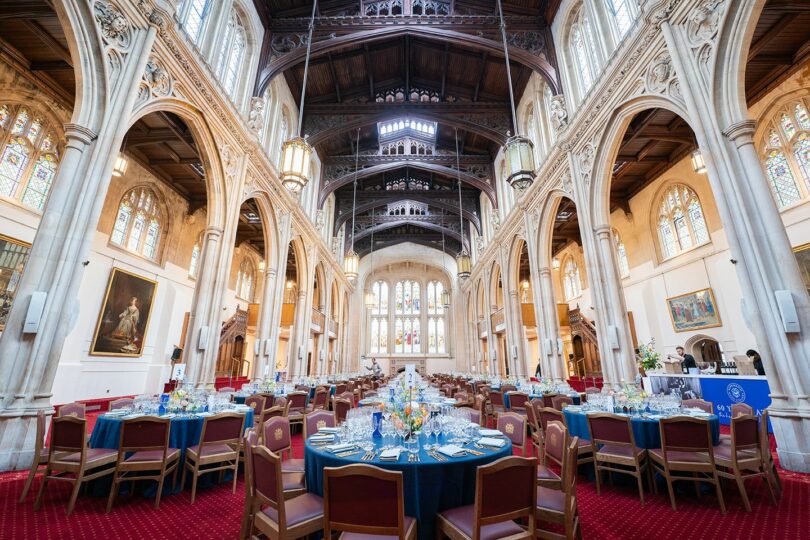February Wines in London & Where Sheep May Safely Graze
At the end of February, I made my first trip to the Mainland since the autumn. I flew to Marseille, taking the stopping train to Avignon and another to Carpentras, where my host picked me up and drove me to the Domaine des Anges in Mormoiron.
It was as quiet as the grave. It is always calm in February, especially when the local schools are on half- term. The winemaker, Florent Chave was up in the Alps with his children. Most restaurants are shut until mid-March, and our society resembled a commune, limited to visits to neighbours on and outside the estate, with plenty of time for reading and reflection.

But an event shattered the peace on the second day of my stay: the arrival of a motley flock of white, brown and black sheep with their soothing, tinkling bells. First a male generalissimo shepherd was spotted, claiming to be responsible for a couple of thousand sheep ranging from place to place in the shadow of Mount Ventoux. He deposited a lieutenant in the form of a girl with a huge rucksack, five dogs and a mobile telephone, who seemed to answer for the hundred or so ewes assigned to our hill.

The dogs appeared to have different functions. A huge, fluffy cream-coloured one was meant to bark at bears and wolves (I am not aware of either venturing into this part of Provence), there was a poodle-like hound the purpose of which was obscure. Then the flocks were further protected by two fierce, wholemeal-hued dogs which barked furiously at my approach. Lastly there was a collie, which did all the things that a collie is supposed to do, and with admirable panache. When the flock came face to face with a car on the road, the collie drove the
ewes back into the vines within seconds.

The ewes were all with lamb, we were told, and all the hungrier for it. It was a sort of modified transhumance timed to coincide with the arrival of the spring: once the sheep are in the vineyards, they gnaw back the grass and weeds as well as scoffing some of the abundant spring flowers and duly scatter manure in return. A simple arrangement with the shepherd allows estate-owners to book the flocks for a few days to a week, depending on the size of their land. As for the shepherdess, she seemed to spend a lot of time looking at her mobile ‘phone.
When night fell, she left the ewes in a former cherry orchard in the care of the dogs. I presume she then rejoined her swain?
As I said, almost all the restaurants were shut, and there were signs of economic distress everywhere. Parts of Carpentras seemed to have closed down, and the prices were high.

In little Mazan, however, we found a newsagent no one had ever seen open before and discovered that it offered a fully equipped bar at the back of the shop complete with a couple of topers bibbing pastis. The markets were friendlier places without the hordes of goggling tourists, and there were the specialities of the season: white asparagus with purple tips, globe artichokes, broad beans, blood oranges and lovely shoulders of new season’s Sisteron lamb no bigger than an old-fashioned soup bowl.
The 2023 reds were not yet around to taste, but there was an excellent white from the Domaine des Anges, with a remarkable acidity for a wine from the Southern Rhone.
The neighbouring estate, the Domaine de Tix had also picked early to retain the bite in the wine: a pure Viognier tasted almost like a Sauvignon Blanc at first, but it filled out in the glass.

Back in London, it was time to celebrate sixty years of the Berkmann Wine Cellars. The firm was founded by the Austrian Joseph Berkmann, who is now well into his nineties and lives in retirement in Saint Tropez. He arrived in Britain in 1956 as a young waiter and in 1964 created Berkmann Wine Cellars as an adjunct to the handful of restaurants he had already acquired in London.
When I came back to London from Paris in 1985, Berkmann Wine Cellars’ warehouse was just round the corner from me in Islington. Once they asked me to write an article and illustrate it with a risqué picture for their magazine. They paid me in wine which I used to give a party in a wonderful all-night Lebanese restaurant in Westbourne Grove. The best of Berkmann’s restaurants was Au Jardin des gourmets in Soho. It had a fabulous wine list. I recall going there in 1987 or 1988 with a generous American friend who pushed the wine list towards me and said ‘Make it expensive!’
I chose a 1961 Cos d’Estournel. My friend looked perplexed. ‘I don’t know this wine?’ He said, and then picking up the list he pointed at the 1979 Pétrus. ‘It’s a bit young’, I said. He was undeterred and we ordered that too. It did indeed need more time, but I was quite happy with the Cos, which had already been decanted and stationed at my elbow.

Berkmann Wine Cellars is now run by Rupert, one of Joseph’s many sons. The lavish tasting was held in the mediaeval crypt of the Guildhall, and even featured a 1964 Antinori wine. For me the highlights were the following: the 1989 Balthasar Ress Oestricher Doosberg Riesling Auslese – wonderful amber-coloured marmalade; the 2013 Prunotto Barolo Riserva Vigna Colonnello, unusual in its lychee aroma, gorgeous Barolo. Prunotto was to some degree the star of the tasting: its 2022 Dolcetto d’Alba was stunning, and at just £14.45, quite a bargain; the 2019 Barolo Mosconi is all citrus fruit, the 2019 Barolo Bussia is also citrussy, with a nose of oranges and lovely length, but my favourite was the 2020 Barbera Nizza Riserva, which seemed to have just about everything and more besides.
The 2012 Drapier Grande Sendrée champagne was honey-scented and packed with fruit; Champagne Jacquesson Cuvée 741 DT was soft and peachy concealing a rapier-like acidity; the 2021 Vincent &Sophie Morey Santenay rouge Les Hâtes, was a lovely light burgundy with a persistent raspberry taste; a heady 2018 Jean-Michel Guillon Gevrey-Chambertin Cuvée

Père Galland was another great red burgundy; the 2020 Alain Michelot, Nuits Saint Georges Vieilles Vignes was all earthy blackberries, blackcurrants and cherries; Peter Veyder-Malberg’s Riesling Buschenberg (Wachau) was wrought in his austere style, avoiding all baroque flourishes but with a lovely whiff of apricots; Scala Dei Mas Deu (Priorat) was the very best of Grenache Noir exuding creamy caramel and chocolate; and the 2013 Masi Campolongo di Torbe Amarone di Valpolicella was also caramel-like with lots of liquorice and brown sugar.







